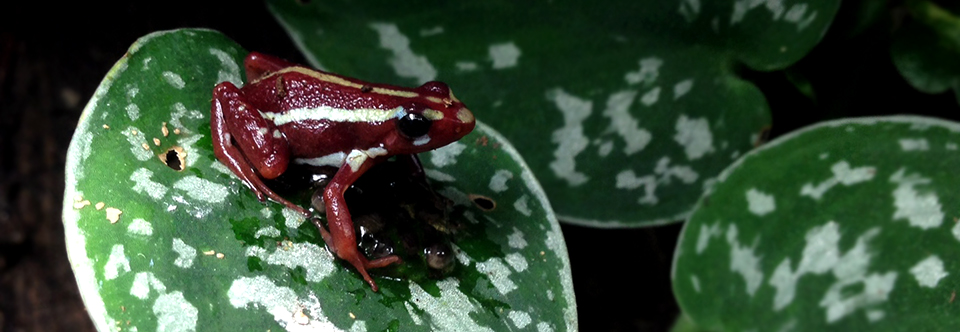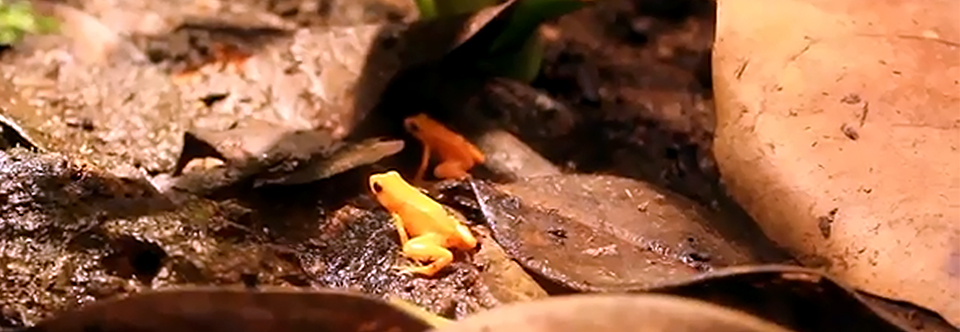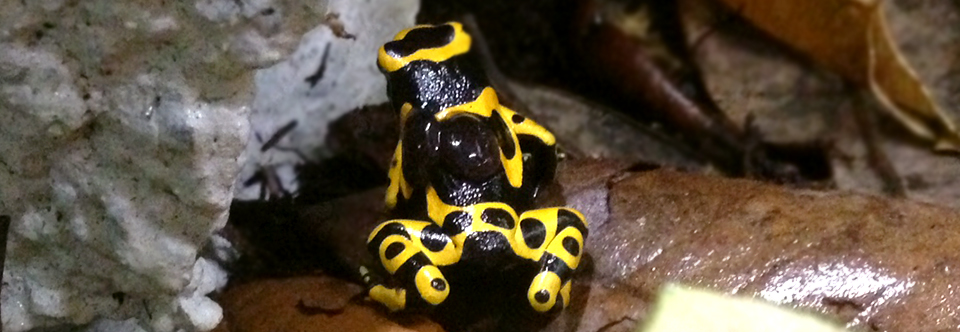
by admin | Oct 9, 2013 | Amphibians, Blog, Frogs
Santa Isabels (Epipedobates anthonyi) are a very prolific species of poison dart frog. Like many dart frogs, they get their name from the locality in which they are native. Here is a picture of a male guarding some freshly laid eggs. This photo was taken just as the tadpoles were hatching. They can freely wiggle in the jelly mass until the male comes to transport them into a puddle of water left by the rains. Males are capable of transporting more than 20 tadpoles at a time! . To learn more about Fauna NYC, visit our website! Sign up for our eNewsletter for new animal arrivals, product discounts, and upcoming...

by Fauna | Oct 2, 2013 | Amphibians, Blog, Frogs
Mantellas are a colorful and diverse genus of terrestrial frogs from Madagascar. At Fauna, we have a breeding group of golden mantellas (Mantella aurantiaca). You may have seen them hopping around in their terrarium on the front counter. Given the right conditions, Mantella aurantiaca breed readily in groups. They breed during the wet season, which means they need high humidity (over 80%), lots of misting, and LOTS of flightless fruit flies dusted with calcium and vitamins. If everything is right, the sexually mature males will begin to call. Unlike many species of frogs, mantellas only call during the day. Their throat puffs up and they make a short clicking noise to attract a female. If a female deems him adequate, she will follow him to a secluded spot to lay her eggs – usually on the water’s edge. He then fertilizes them and they both abandon the eggs. The small, white eggs develop into a tadpole in 2-6 days. Then the round, protective jelly encasing each egg collapses into a large blob of fluid. In the wild, rainwater would wash the tadpoles out into the water below. We remove the eggs and place them on a rock at the water’s edge in our tadpole tank. They are misted to keep moist until they are large enough to wiggle themselves free. The tadpole tank has a few rocks and plants for them to hide. A partially submerged piece of slate, placed at an angle, allows the hatching tadpoles to slip into the water. It is also useful for metamorphosing tadpoles to exit, emerging as...

by Fauna | Sep 30, 2013 | Amphibians, Frogs
Here’s a group of 5 eggs eggs from a poison dart frog called Dendrobates leucomelas. Like most terrestrial species of darts, the females will lay the eggs on a flat, well hidden surface on the forest floor. This female chose a small leaf that was covered by a few larger ones. After about a week, the tadpoles will form. Here they are almost fully developed but still encased in their eggs. You can see how each one is separated into a small sphere surrounded by the jelly mass. At this point, we moved the eggs and put them in a petri dish on top of wet sphagnum moss to provide the necessary humidity. If the eggs are not removed from the tank, the male will carry the developed tadpoles on his back. He will then deposit them in a small pool of water. They are left there to fend for themselves. . To learn more about Fauna NYC, visit our website! Sign up for our eNewsletter for new animal arrivals, product discounts, and upcoming...




